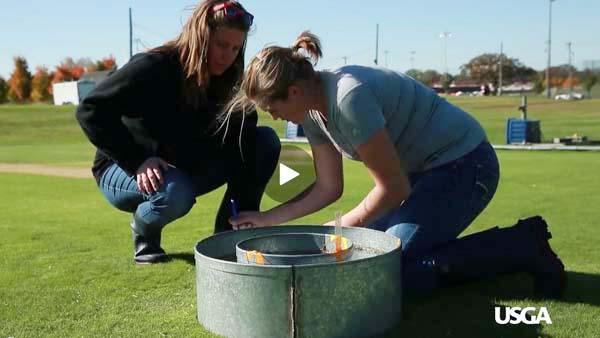Don't look now, but two entities finally are stepping forward to do something about sustainability issues in golf rather than just talk about them.
The USGA and the University of Minnesota announced a five-year joint effort to not just identify and study some of the most significant challenges facing the golf industry; they plan to find solutions to them, as well.
"This partnership is really set out to define, advance and really focus on agronomic practices, business models and environmental stewardship solutions that are sustainable for the golf course industry," said Brian Horgan, Ph.D., professor of horticulture science at the University of Minnesota.
The partnership will allow for both the university and the USGA to identify potential projects individually and leverage the school's resources to find solutions based in innovation. The College of Food, Agricultural and Natural Resource Sciences, Carlson School of Management, College of Science and Engineering and the Humphrey School of Public Affairs all are expected to participate in and contribute to the program over the next five years.
The program will utilize turf research facilities at the university as well as its Les Bolstad Golf Course and extensive research and computing facilities elsewhere throughout the campus.
The partnership gets students and researchers involved with an industry in need of innovative solutions to real problems in hopes of advancing the goals of the golf industry.
"Participation and growth are central issues for the health of our game, but there are many other critical and complex factors that will contribute to its long-term sustainability," said USGA executive director Mike Davis in a news release. "This agreement will further the USGA's mission to apply fact-based research and deliver tested solutions back to the industry, particularly in three areas: the game's cost, the time it takes to play and golfer enjoyment."
Projects will focus on agronomic, economic and environmental issues, course design. This arrangement could include anything that will help contribute to the strength and vitality of the game, including advancements in equipment. The aim will be to educate superintendents and others working inside the golf industry as well as players and others interested in the game.
"We are a really data driven organization, especially here in equipment standards," said John Spitzer of the USGA equipment standards division. "And the thought that we might be able to take advantage of the reams and reams and reams of data and apply that and take advantage of their super computing center is just phenomenal. Those are the kind of things that we now have a wide-open sky where we might be able to do anything. There are no limitations on the technology that we can bring to bear to solve a problem and protect the game."
More information on the program here.


